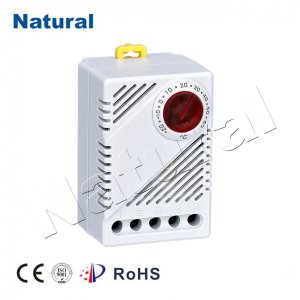In the ever-changing landscape of technological advancements, one area that has undergone significant transformation is home comfort control. The introduction of electronic thermostats has revolutionized the way we regulate the temperature in our living spaces, offering convenience, energy efficiency, and customization like never before.

Electronic thermostats are a far cry from their mechanical predecessors, offering a plethora of benefits that cater to the demands of modern living. Unlike traditional thermostats, which required manual adjustments and often resulted in temperature fluctuations, electronic thermostats provide accurate and consistent temperature control. These devices utilize advanced sensors to detect even the slightest temperature changes, ensuring that your home remains at your desired comfort level throughout the day. One of the standout features of electronic thermostats is their programmability. With the ability to set different temperature schedules for various times of the day, users can now pre-program their thermostats to adapt to their daily routines. This not only enhances comfort but also contributes to energy savings by automatically adjusting the temperature when you’re away or asleep, reducing unnecessary heating or cooling. Furthermore, electronic thermostats have paved the way for remote control and smart home integration. With the advent of smartphone apps and Wi-Fi connectivity, homeowners can now adjust their thermostat settings remotely. Imagine being able to turn up the heat before you arrive home on a chilly winter evening or cooling down your living space while on vacation in the middle of summer. This level of control not only adds convenience but also enables greater energy efficiency by preventing overuse when no one is home. Energy conservation is a pressing concern in today’s world, and electronic thermostats play a crucial role in addressing this issue. Many electronic thermostats are equipped with learning algorithms that analyze your usage patterns and provide recommendations to optimize your heating and cooling settings. By learning your preferences over time, these thermostats can make automatic adjustments that strike a balance between comfort and energy savings. In addition to learning algorithms, some electronic thermostats even provide detailed energy usage reports. These reports offer insights into how much energy your heating and cooling systems consume, empowering homeowners to make informed decisions about their energy usage. This awareness can lead to more conscious choices, reducing both energy bills and environmental impact. It’s important to note that the rise of electronic thermostats has also prompted innovation in sustainable technologies. Some models integrate with renewable energy sources such as solar panels, allowing homeowners to harness clean energy for their heating and cooling needs. This synergy of electronic thermostat technology and renewable energy showcases the potential for a more sustainable future. In conclusion, electronic thermostats have transformed the way we experience comfort in our homes. With their precision, programmability, remote control, and energy-saving features, these devices offer a level of convenience and efficiency that was once unimaginable. As technology continues to evolve, we can expect even more advancements in the realm of home comfort, all aimed at enhancing our quality of life while minimizing our environmental footprint.